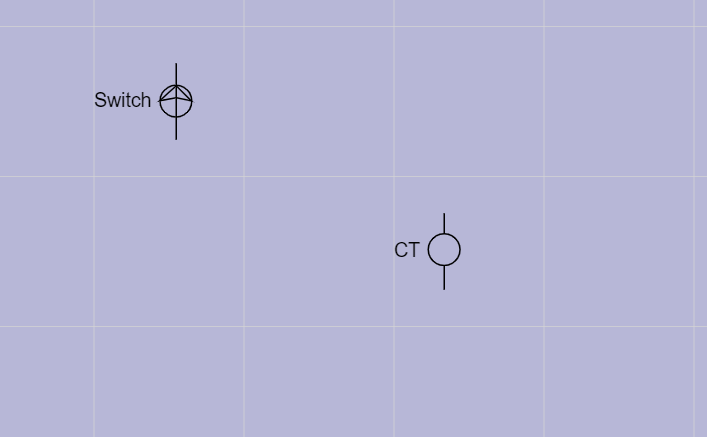I believe that what I suggested above works well. Here’s a complete sample:
<!DOCTYPE html>
<html>
<head>
<title>Minimal GoJS Editor</title>
<!-- Copyright 1998-2021 by Northwoods Software Corporation. -->
<script src="https://unpkg.com/gojs"></script>
<script id="code">
function init() {
var $ = go.GraphObject.make;
// initialize main Diagram
myDiagram =
$(go.Diagram, "myDiagramDiv",
{
grid: $(go.Panel, "Grid",
{ gridCellSize: new go.Size(100, 100) },
$(go.Shape, "LineH"),
$(go.Shape, "LineV")
),
"draggingTool.isGridSnapEnabled": true,
"draggingTool.gridSnapCellSpot": go.Spot.Center,
"undoManager.isEnabled": true
});
myDiagram.nodeTemplate =
$(go.Node, "Spot",
{ locationSpot: go.Spot.Center, locationObjectName: "SHAPE" },
new go.Binding("location", "loc", go.Point.parse).makeTwoWay(go.Point.stringify),
$(go.Shape, "Circle",
{ name: "SHAPE", width: 30, height: 30, fill: "white", stroke: "gray", strokeWidth: 2 },
new go.Binding("stroke", "color")),
$(go.TextBlock,
{ alignment: go.Spot.Left, alignmentFocus: go.Spot.Right },
new go.Binding("text"))
);
// initialize Palette
myPalette =
$(go.Palette, "myPaletteDiv",
{
nodeTemplateMap: myDiagram.nodeTemplateMap,
model: new go.GraphLinksModel([
{ text: "R", color: "red" },
{ text: "G", color: "green" },
{ text: "B", color: "blue" },
{ text: "O", color: "orange" }
])
});
// initialize Overview
myOverview =
$(go.Overview, "myOverviewDiv",
{
observed: myDiagram,
contentAlignment: go.Spot.Center
});
load();
}
// save a model to and load a model from Json text, displayed below the Diagram
function save() {
var str = myDiagram.model.toJson();
document.getElementById("mySavedModel").value = str;
}
function load() {
var str = document.getElementById("mySavedModel").value;
myDiagram.model = go.Model.fromJson(str);
}
</script>
</head>
<body onload="init()">
<div style="width: 100%; display: flex; justify-content: space-between">
<div style="display: flex; flex-direction: column; margin: 0 2px 0 0">
<div id="myPaletteDiv" style="flex-grow: 1; width: 100px; background-color: floralwhite; border: solid 1px black"></div>
<div id="myOverviewDiv" style="margin: 2px 0 0 0; width: 100px; height: 100px; background-color: whitesmoke; border: solid 1px black"></div>
</div>
<div id="myDiagramDiv" style="flex-grow: 1; height: 400px; border: solid 1px black"></div>
</div>
<div id="buttons">
<button id="loadModel" onclick="load()">Load</button>
<button id="saveModel" onclick="save()">Save</button>
</div>
<textarea id="mySavedModel" style="width:100%;height:200px">
</textarea>
</body>
</html>
